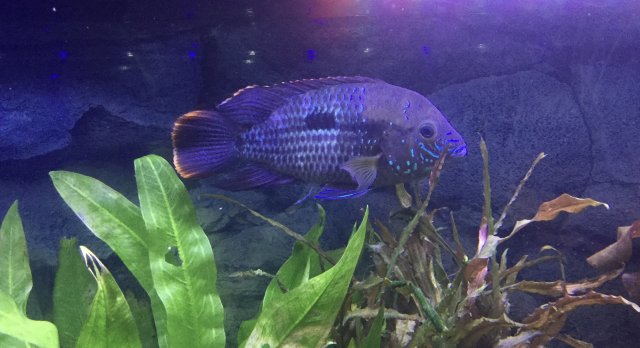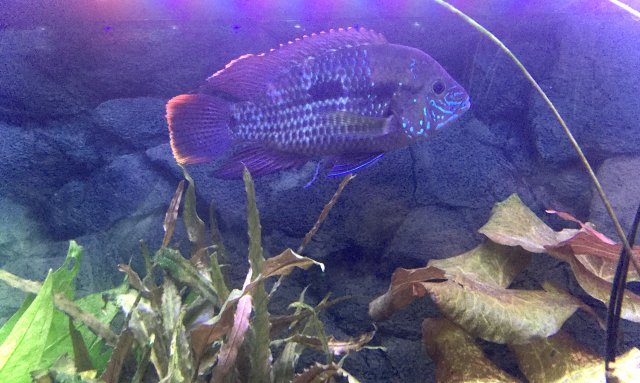I raised this GT from juvies to 5” subadult, then about 2 months ago he stopped eating completely. He appears happy, not reclusive, and continues to defend his territory. He looks healthy with vibrant color, except for the white poop. Despite not eating for two months, there is no sign of wasting away or developing hollow belly yet. I have lost fish before that refused to eat, but they never looked happy and eventually wasted away to death. What’s happening and any chance of saving him?







